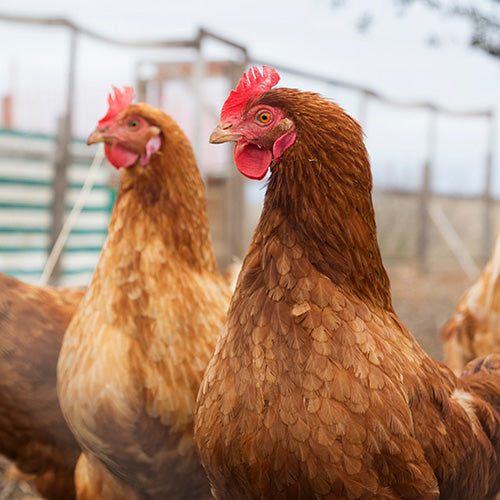
How to provide the right housing for your lambs
Before your newborn lambs are ready to join the rest of the flock, they must have a comfortable, clean place to stay. Within the first few days, your lamb will be able to begin developing into a strong and healthy member of your flock with the proper environment.
Proper bedding
Once your ewe gives birth, a standard 5’x5’ lambing jug or 16-20 square feet of clear space if housed in a barn or shed will give them plenty of room. Cold temperatures will not necessarily bother your lambs if they have a thick layer of clean, dry bedding made of straw or shavings to insulate them from the cold of the ground or floor. If your barn has concrete floors, add a base layer of sawdust or shavings under the bedding to add extra insulation.
Protect them from the cold
If lambs become too cold, they may develop hypothermia. Make sure to watch for signs that your lamb may have hypothermia:
Reduce drafts and improve ventilation
In open barns, building panels can reduce cold winter drafts. You should also ensure your barn has adequate ventilation that will reduce the moisture, animal odors and gasses that can cause respiratory illnesses such as pneumonia.
To check if your barn has adequate ventilation, look for condensation on the walls or ceiling or smell for ammonia. In order to fix a ventilation problem, consider installing windows, fans and inlets around the ceiling perimeter to allow fresh, cold air from the outside to mix with warm air before coming into contact with your lamb.
With the knowledge to properly house your newborn lamb and the confidence to give them a comfortable environment, you can make sure they start life in the best way.
Find more tips on lamb care and nutrition, then follow My Farm Journey on Facebook and Instagram for additional insights.
Proper bedding
Once your ewe gives birth, a standard 5’x5’ lambing jug or 16-20 square feet of clear space if housed in a barn or shed will give them plenty of room. Cold temperatures will not necessarily bother your lambs if they have a thick layer of clean, dry bedding made of straw or shavings to insulate them from the cold of the ground or floor. If your barn has concrete floors, add a base layer of sawdust or shavings under the bedding to add extra insulation.
Protect them from the cold
If lambs become too cold, they may develop hypothermia. Make sure to watch for signs that your lamb may have hypothermia:
- They appear weak.
- They appear gaunt.
- They are hunched up.
- Their ears or mouth feel cold to the touch.
Reduce drafts and improve ventilation
In open barns, building panels can reduce cold winter drafts. You should also ensure your barn has adequate ventilation that will reduce the moisture, animal odors and gasses that can cause respiratory illnesses such as pneumonia.
To check if your barn has adequate ventilation, look for condensation on the walls or ceiling or smell for ammonia. In order to fix a ventilation problem, consider installing windows, fans and inlets around the ceiling perimeter to allow fresh, cold air from the outside to mix with warm air before coming into contact with your lamb.
With the knowledge to properly house your newborn lamb and the confidence to give them a comfortable environment, you can make sure they start life in the best way.
Find more tips on lamb care and nutrition, then follow My Farm Journey on Facebook and Instagram for additional insights.
Find Solutions for Your Animals
-

Whether housed in a coop or free ranging on your farm, your birds are exposed to multiple threats every day that could cause illness or impact their well-being. Now there’s a way to be more proactive with regular support for...
-

You’ve raised your chicks to adulthood and now they’re fully feathered hens. Way to go! Now, you get to enjoy their eggs and companionship for years to come. To maximize their life, support their production potential and kee...





